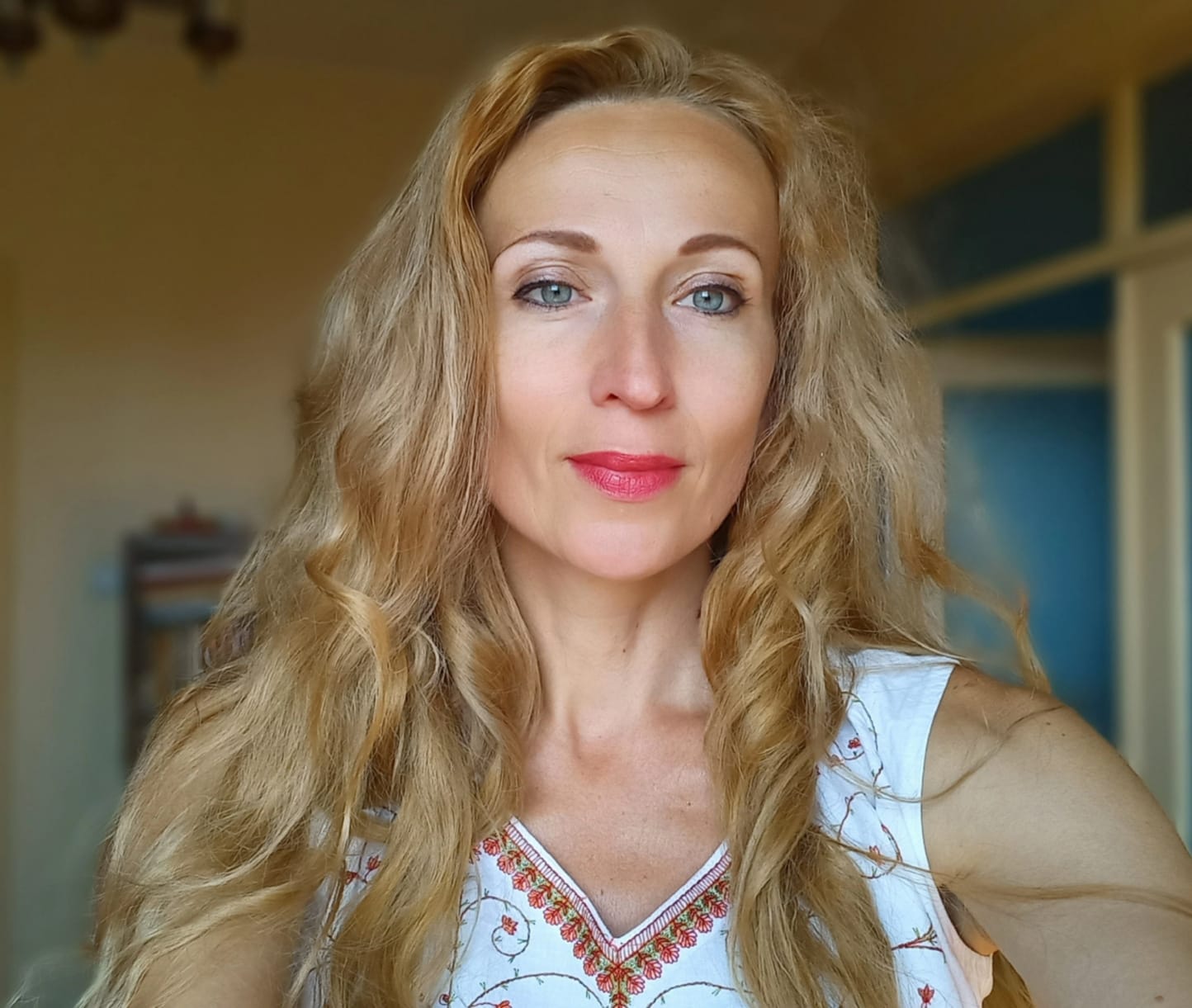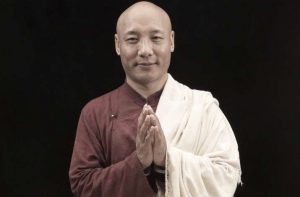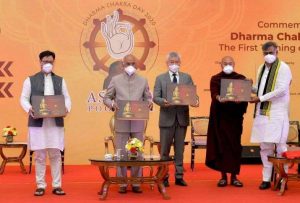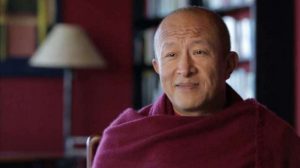
Ngakma Mé-tsal Wangmo and Naljorpa Ja’gyür Dorje are an ordained teaching couple within the Aro gTér lineage of the Nyingma tradition of Tibetan Buddhism. Aro gTér is a small yogic lineage founded by the Nyingma terton Khyungchen Aro Lingma (1886–1923).
Mé-tsal Wangmo and Ja’gyür Dorje visited Norway from 9–13 March, giving a lecture on “Hidden Yoginis: Teachings and Practices from a Tradition of Enlightened Women” as well as refuge teachings and vows. During their program, they presented the non-monastic, yogic tradition of Tibetan Buddhist practice, in which realization can be found in “the workplace or the grocery store, rather than in a monastery.” The Tibetan yogic tradition is associated with ngakpa and ngakma (སྔགས་པ་ and སྔགས་མ་), male and female non-celibate tantric practitioners or gökar changlo de (གོས་དཀར་ལྕང་ལོ་སྡེ་), the white-robed, long-haired community.
Buddhistdoor Global had the privilege of interviewing Mé-tsal Wangmo and Ja’gyür Dorje during their short visit to Norway. We discussed the non-dual nature of romantic love or tsewa (བརྩེ་བ་) in the context of the Vajrayana practice of vajra-romance, based on the Khyungchen Aro Lingma’s Khandro Pawo Nyda Melong Gi Gyu མཁའ་འགྲོ་དཔའ་བོ་ཉི་ཟླ་མེ་ལོང་གི་རྒྱུད་, Tantra of the Mirror of the Sun and Moon, Khandro and Pawo). In the Tibetan Buddhist tradition, khandro or khandroma (མཁའ་འགྲོ་མ་, Skt: ḍākinī) is a female embodiment of enlightened energy and a wisdom-display of emptiness, pawo (དཔའ་བོ་, Skt: ḍāka, literally “hero”), the tantric equivalent of a bodhisattva, and the male method-display of compassion.

Buddhistdoor Global: What are the benefits and challenges of teaching the Dharma as a couple?
Mé-tsal Wangmo: The most obvious benefit for students is that they have two manifestations of the teachings. It gives twice the chance to say something essential or useful to somebody. The benefits as a teacher are that you continuously learn from the other person, being in the position of both student and teacher. When I was teaching on my own for many years, it was quite lonely sometimes. If you are teaching on your own, you don’t have anyone to say whether the teaching went well: Did I explain it well? Could I do that better? There is no one to have this conversation with. For that reason, if someone is not in a relationship as a teaching couple or someone teaches on their own in our lineage, we sometimes suggest that they teach with somebody else, not as a couple but just so that they can be two people teaching together.
The challenge is for someone who likes to run everything, to control everything—you have to let go. When Ja’gyür joined me, suddenly I had to let go of some of the ways I had been doing things and allow him to join in. Within Aro gTér, we always want to support female teachers as well as teaching couples. Even in a teaching couple, the woman does more of the public teaching or speaking, there being not so many of us in the world.

BDG: What is the role of love in the vajra-romance teachings?
Ja’gyür Dorje: When you fall in love naturally, people don’t know what is happening. But actually, when you look at it, it is because both people are open. There is some kind of openness, emptiness; that’s why they can just say “yes” to the other person all the time in a good way. They ask: “Do you want to go skiing?” You never ski but you say: “Yes, of course,” because you want to do it with your partner. And usually in relationships people say I want to do my things. So this is actually a very nice method that we use in our tradition of appreciating what your partner is doing, and your partner appreciating what you are doing. It is a method of continuing being in love and appreciating what your partner suggests.
MW: The vajra-romance teachings are premised on the fact that what happens when you fall in love is a little bit mysterious. Obviously, when you fall in love, why you fall in love with that person is mysterious. Naturally, falling in love has in it a huge number of reflections of realizations. When you are in love, when you are very excited, you are kind and nice to be around, you are more open, you are very positive, you speak kindly about everybody and you are in a very receptive, kind state. This naturally happens when you fall in love and is much closer to the natural state of being. There are many aspects to falling in love and being in love actually mirrors realization, ultimately it has that possibility.

BDG: So vajra-love is not only about love between vajra practitioners?
MW: No. But it does means having romance and a relationship that is informed by Vajrayana principles and supported by practice, because if both people are practicing, you can’t stray too far; you can’t go to into a sulk for a week and not talk with your partner because they didn’t put the top back on the toothpaste properly. If you are annoyed with your partner, you go and sit and meditate and let go of those feelings. This is what practice is. And then you can come back again. So it supports the relationship because you both are practicing.
BDG: Do you find any challenges in regard to vajra-love?
MW: There are some misunderstandings and confusion about the khandro-pawo relationship because a lot of the teachings come from a cultural context, and if you look at Tibetan or Bhutanese culture, than we are talking about patriarchy. So most of the teachings were given by men from the viewpoint of a man. They will just talk about the khandro principle, but actually it is the khandro–pawo principle. If you are a woman, it’s the pawo principle. You hear many people talking about the khandro principle; you don’t hear many people talking about the pawo principle, but they are the same because women’s experience of being in the world is being informed by inner pawo qualities.

BDG: Can we associate the khandro-pawo relation with the absolute union?
MW: We talk more in terms of non-duality. Spacious passion and passionate space, male-female, female-male principle. This is the mirroring. If you talk about men and women having male and female aspects of reality, we talk about the indivisibility of that. You can’t have one without the other. It doesn’t mean you can’t have man without a woman, you can’t have emptiness without form. And it is more about the non-dual manifestation that is about manifesting cosmic love. We talk about manifesting non-dual nature.
JD: Those two principles actually go back to The Heart Sutra—form is emptiness and emptiness is form, or spacious passion and passionate space.

BDG: How are vajra-romance teachings implemented in a relationship?
MW: The teachings on vajra-romance from the Aro gTér are call Khandro Pawo Nyda Melong and that is khandro-pawo and ny-da is Sun and Moon; melong is the mirror there. It is actually the mirror that reflects the Sun and the Moon of khandro and pawo. The practice is to recognize the reflection of khandro-pawo. For me it is to recognize the reflection of my inner pawo qualities in Ja’gyür’s outer manifestation, and for him to do the same with me. Everything you see is a wisdom and method display, in my view of reality having this pawo quality of method display.
JD: We are, first of all, Buddhist practitioners and this instigates a few basic principles. We are taking refuge, we are also taking the bodhisattva vows in the sense that it is the core of the principles of the sangha. Everything should be based on the five precepts.* Especially if you are a teacher in Aro gTér; our teachers are totally monogamous. For our tradition this is important to have one partner. All the teachers in Aro gTér need to follow that principle. If you are a single teacher, it doesn’t mean you teach and take consorts from all of the places you go for teaching. We don’t do that. It may happen, but it should not happen.
MW: Actually, within the khandro-pawo teaching, monogamy is the only really functional path because it has practices in terms of how you navigate each day and living with someone who manifest this. For us, the main practice is to view your partner as a buddha. If your practice is to always look at your partner as the realized being (as Guru Rinpoche and Yeshe Tsogyal) that they actually are, that is what you are looking for and then something happens that does not seems like what the Buddha would do, that is just seen as a moment away from that. What we always relate to is the Buddha. If both people are doing that, then you can have something magical happen because you are always looking for that reflection in each other. All you have to do is to let go of the “me” project. As soon as you do that, the relationship becomes a wonderful support, mirroring each other’s wonderful qualities. That is all found in emptiness.
There are aspects of khandro-pawo practice that can be implemented in a relationship, like continuing to say “yes” as you did when you were first together and making a deliberate decision to continue doing that. The real possibility and the magic of khandro-pawo practice comes from meditation practice when both are able to let go. Of course, it is hard for people if they are in a relationship where they are a practitioner and try to approach the relationship from that perspective when the other person isn’t. Then you end up with many more difficulties.

BDG: Can you summarize the essence of your Dharma path?
JD: Be kind and say “yes” to your partner.
MW: Be kind and allow your partner to mirror how you are. Allow mirroring, so that you have a reflection of your splendid inner qualities, but you are also willing to see yourself manifest a little more kindness. In terms of having taken the bodhisattva vows, wanting to be useful and effective and compassionate in the world. We really need people who have decent relationships that are visible to other people because how you are as an individual obviously affects everyone. You radiate outward and affect everyone within your sphere.
* To abstain from: taking life, taking what is not given, sensuous misconduct, false speech, intoxicants that cloud the mind.
See more
Related features from BDG
Ngakma Mé-tsal Wangmo – A Vicar of Vajrayana
The Path and Practice of Vajra-Romance
On Prejudice, Vajrayana, and the Perception of “Otherness”
Related news reports from BDG
Entering the Heart of the Sun and Moon: Online Teaching with Ngak’chang Rinpoche and Khandro Déchen
Aro gTér Vajrayana Lineage Celebrates 25th Anniversary of SNCD Buddhist Charity
Oxen Becoming Tigers: Online Teaching with Ngak’chang Rinpoche and Khandro Déchen












